Messing about in boats since 1975. Online Since 1997.
Home | Intro | Our Design Process | Stock Design Info | Motor Yacht Designs | Sailing Yacht Designs | Prototype Designs Plans List | Articles | Our CAD Design Stream | Maxsurf | News..! | SITE MAP..! | Site Search | Design Team | Contact Us Please see the AVAILABLE BOAT PLANS web page
An Analysis of Slocum's 37' Yawl 'SPRAY' And a Strategy for Improvement..! Click for a Larger Image Spray Original Sail Plan | Spray Original Hull Lines | Spray Original Body Lines Article & Screen Shots Copyright 2011 - 2019 Michael Kasten QUALITIES OF SLOCUM'S SPRAY First, I should confess that I am actually a fan of the original Spray - i.e. the one that Joshua Slocum sailed around the world. However I am only a fan in a limited sense. Allow me to elaborate... What the ORIGINAL Spray was most notably able to contribute to Slocum's voyage was excellent directional stability, i.e. outstanding and apparently infallible course keeping ability. This inherent self-steering ability was the result of several factors: A long straight keel, deepening aft A full and rounded bow A long straight run aft A forward-of-amidships center of buoyancy. This combination allowed the vessel to behave somewhat like a dart, with the weight forward and the feathers aft. Alternately you can imagine a tear-drop shaped bomb with fins aft - the ideal shape for stability in a free-fall environment. This made the Spray rather poor to windward, but superb off the wind. The Spray was not slow, as many might imagine. On the contrary, the Spray was capable of quite fast sailing when off the wind or on a reach. This was due to her shoal draft, far forward CB, long straight run of the buttock lines aft, extreme stiffness due to her excessive beam and shallow draft, and having a low aspect but very ample gaff yawl rig. In other words, a slippery shape and plenty of sail area...! DRAWBACKS OF SLOCUM'S SPRAY As a long distance voyaging boat the Spray did have several drawbacks, the most important of which were excessive beam and extremely shoal draft. This combination resulted in the vessel being just as stable upside down as it was upright. In plain words, the Spray had zero self-righting ability. It should be noted that the wooden oyster smack that Slocum named the "Spray" was presented to him as a gift, i.e. for free. At that point it was a rotten old hulk which Slocum then proceeded to restore on a very limited budget. Due to Slocum’s extraordinary talent as a master mariner he had quite a successful voyage despite the limitations of the vessel, which was never intended for sailing offshore in the first place, but rather intended as an inshore “dragger” with ample sail area for that purpose. This is a prime example of a commonly shared characteristic amongst many of the well known long distance sailing voyages that have been accomplished by various sailors in various diverse kinds of craft. These were invariably not the result of long arduous planning to create the "ideal" voyaging boat. Instead, the most spectacular individual sailing achievements have occurred when a determined sailor encountered a 'more or less' suitable craft that they could acquire inexpensively and in which to put to sea, without too much fooling around... In other words, they were opportunists who made expedient use of what was ready to hand. It is a good lesson! Slocum's spectacular voyage with the Spray was no exception. FAITHFUL REPLICAS... The above comments apply to the ORIGINAL Spray, as rebuilt by Joshua Slocum, which has subsequently been reproduced by others such as Pete Culler and Gilbert Klingel, often with very good success. Most of them were highly faithful to the original. I was fortunate enough to go aboard a very good replica of the Spray in Hawaii in 1979, built by Bob Carr in Vermont, which he single-handed from there to Honolulu. He had been some 180 days from Panama to Hawaii, possibly a record for the slowest passage on that route..! However Bob had encountered long periods of calm, and a number of storms. His mains'l was blown out, and he was nearly down to the bottom of his "bean barrel" even though he did catch a lot of fish..! It was impressive to see three large garbage pails in the store room: one for beans, one for rice, one for wheat. A friend Michael Colfer and I helped Bob Carr paint the boat's bottom while he was hauled out at Keehi Lagoon, near Honolulu. Bob told us several good stories during that time and we were well fed, albeit on chicken stew of questionable vintage. There being no refrigeration aboard, this actually was cause for concern. Like many before him, Bob Carr sailed without an engine and he used kerosene for lights and for cooking. The only electricity aboard was contained within his flashlight and a Zenith transoceanic radio...! Another friend, George Maynard, built a faithful replica of Slocum's Spray in Noank, Connecticut - Slocum's original starting place. Maynard named his vessel "Scud" and subsequently sailed it around the world with his wife and young children - a daughter and two sons. Maynard's voyage, like that of Slocum and Bob Carr, was accomplished without the aid of an engine or any fancy electronics. Since then I have read that a sailor purchased Maynard's "Scud" and has once again circumnavigated in the vessel, also without an engine. Quite a number of Spray replicas have achieved similar success. Others have met with shipwreck or loss without a trace such as the ferro-cement Pandora. This in fact is what happened to the original, which took along Mr. Slocum himself. ... AND THE UNFAITHFUL In recent years the name “SPRAY” has been used by a few boat designers in order to take advantage of name recognition for marketing purposes. Most notably, several steel "Spray" models have become popular among amateur steel boat builders. This is largely because the plans are heavily marketed and very cheap to buy. Despite the obvious fact that those designs have nothing in common with the original Spray, the renown of the name itself is apparently convincing to those amateur boat builders. The lack of any semblance to the original is also the case in terms of the vessel's rig, its hull shape and many other parameters, but most notably it is so in terms of their appearance. I regard these so-called “Spray” designs as being extremely crude attempts, especially in terms of their total disregard for the beauty of the original Spray. In my opinion these “Spray” poseurs have little if any relationship to the original except to say that they have borrowed the "Spray" name, and that they are fat, overweight, and total dogs to windward - nothing else in any way resembles the original. They are an unconscionable travesty vs. the finesse of Slocum's original Spray. Further, those vessels have failed to improve upon the inadequate ultimate stability of the original Spray. As insult to injury, the structure of these vessels is inordinately complex, in other words poorly adapted to amateur construction, as is their claim. I am quite sure you know the vessels of which I speak... I do not need to name names. MODELING THE ORIGINAL SPRAY Having said these things, I have always been curious about the SPRAY. In particular I have wanted to understand and possibly replicate its excellent course keeping ability for use on other designs. In order to know more about the SPRAY, I went to the trouble to model the design so that I could investigate its hydrostatics, stability, balance and sailing performance in greater detail. Images that show the results of that modeling effort can be seen in the following links and the image below: Original Spray Above Aft | Original Spray Above Forward Click Image for Larger View PARTICULARS & COMMENTARY Particulars of Slocum's Original Spray are: Length on Deck: 36' - 9" Length on WL: 32' - 2" (including stem) Length on WL: 31' - 3" (excluding stem) Beam on Deck: 14' - 1" Beam on WL: 13' - 9.5" Draft at DWL: 4' - 2.5" Displacement: 16.1 Long Tons (including keel) Displacement to Length: 483 Long'l Position of CB: 50% (including keel, measured from stem rabbet) Prismatic Coefficient: .673 (including keel) Prismatic Coefficient: .668 (body only) Beam to Length on Deck: 38.5% WL Beam to WL Length: 44% (excluding stem) Yawl Rig Sail Area: 1,137 sq. ft. Sail CE Lead vs CLR: 8.9% (about right considering extreme beam, shoal draft, and low aspect rig) SA / Displacement Ratio: 16.6 (typical range: 16 to 21, therefore fairly low) SA / Wetted Surface Ratio: 2.5 (typical range: 2.0 to 2.6, therefore about right) Commentary : Looking at the above data, a few comments are in order. A Displacement to Length of 483 is very high. Please see my Calculations PDF for the ranges one should expect in a cruising vessel, which indicate a D/L more on the order of around 300 to 325 for fairly heavy cruisers. The Prismatic Coefficient at .673 is very high. Having been originally built as an oyster smack, Spray was designed for maximum carrying capacity on a shallow draft, therefore a high Cp is not entirely out of place. Such a high Cp means very full ends, in this case weighted slightly more in favor of the bow than would be the case with a modern sailboat. A high Cp favors high speed, but is a disadvantage in terms of wavemaking resistance when sailing at slower speeds, as is more often the case. More typically a sailing yacht's Cp should be in the range of between .55 and .58 for all-around cruising, possibly a bit higher for a racing sailboat. In my view, for this type of vessel used as a yacht, Cp would ideally be reduced to somewhere in the range of .58 to .61 at the most, which would still favor higher sailing speeds, but which would confer improved pitch dampening and added buoyancy in the ends for heavy weather (as compared to a typical sailing yacht's Cp). The sail area to wetted surface ratio of 2.5 is quite good in the original Spray, indicating good light weather performance, however the SA to Displacement ratio of 16.6 is less than optimum. Sail area could therefore be increased, especially so given the enormous initial stability (stiffness) under sail, aiming closer to a ratio between 18 and 20. See my Sail Area Ratios PDF for more information. A ratio of WL Beam to WL Length of 44% is really rather extreme. Something on the order of around 33% is much more in keeping with sea-going sail boats. Assuming a VCG of 6 inches above the DWL (an assumption only), the Dellenbaugh Angle is calculated to be 5.8 degrees with 15 knots of wind abeam. Raising the VCG to 9 inches above the DWL results in only a small increase in heel: to 6 degrees... in other words, the hull shape is EXTREMELY stiff, as would be expected. A typical range of heel angles for this size sail boat is on the order of 13 to 19 degrees. Quite a difference..! Model Notes: It should be pointed out that Slocum’s originally published lines DO NOT match between all three views. In other words, one or more of the views is incorrect, or just poorly drawn, or maybe the lines were messed up by the publisher in trying to squeeze them onto a book page, who knows... Since the model I created is a fully 3-D NURBS surface model, it has no choice but to match in all three views…! The model I created is as close as I can get it to the originally published design. In 1909 an article was written about the Spray for the Rudder magazine by naval architect C. Andrade Jr. In the article, C. Andrade published his own faired lines drawings and calculations. Interestingly, Andrade’s calculated hull data match my own very closely. In 1976 another article was written for Rudder magazine by Naval architect Weston Farmer, who also faired the lines and published them along with the offsets . Farmer’s calculated displacement, max section area, waterplane area, etc. do not match my own modeling results, nor those of C. Andrade. Farmer's max section, WP, etc. were less than what I have found, and were off by some two tons in displacement. So even though the Farmer lines are sweet and nicely faired, I intentionally did not use Farmer’s lines because I wanted get as close as possible to the original. Naval architect Pete Culler actually built a Spray of his own, then wrote a book about building the boat and sailing it. In his book, Culler published his own lofted and faired Spray lines drawing. But Culler had changed the design slightly (deeper keel, different bow profile, different rabbet line, different cabins, etc.) so I did not use Culler’s lines. Among them, C. Andrade Jr. comes the closest, and even though there are a few minor differences, my data matches Andrade’s hull data very well. It should be noted that C. Andrade was a contemporary (more or less) of Slocum and was therefore possibly better positioned to have access to Slocum’s own records. Between Culler, Farmer, Andrade and Slocum, I elected to use the original lines from Slocum’s book in order to make the most accurate possible model of the ORIGINAL Spray. REFINEMENTS..? Based on the above, my conclusions have been that the original SPRAY model would benefit greatly by being made deeper and longer, with possibly slightly greater freeboard, but without changing the favorable attributes of the hull. With those changes accomplished, the ratio of beam to length will be brought more in line with traditional cruisers, as will be the ratio of beam to hull body depth. These changes would be introduced primarily for the sake of enhanced large angle stability (greater length and depth), but also to improve the windward ability of the hull (greater depth & outside ballast). In so doing, ideally the Center of Buoyancy would not be moved forward or aft, however as a consequence of the deeper body the CB would be lowered as would the CG. This combination would preserve most of the vessel's stiffness without degrading its inherently excellent self steering capabilities. After I had created the NURBS surface model of the original SPRAY, I then made the above mentioned modifications to the hull shape to see what that might offer. Though my modifications may not be all that easy to detect in the images linked below, they have indeed produced the desired result... Modified Spray Perspective Forward | Modified Spray Perspective Aft THE MODIFIED SPRAY MODEL Length on deck has been increased to 48 feet, and the WL length to around 41 feet; beam is unchanged; depth of hull is increased and the resulting draft is 4.72 feet; displacement has been increased to 22.9 long tons; and sail area is increased. As a result of having been made longer but without changing the beam, the Displacement to Length has been reduced to around 329, which is still a robust hull shape but not overly heavy. The Prismatic Coefficient is down to .64 including the keel and stem, and .66 for the hull body only. This is still a bit too high for optimum performance at typical sailing speeds, but is indicative of a high speed potential and ample buoyancy in the ends for better support in heavy weather. The Center of Buoyancy remains approximately amidships, and is therefore unchanged. The fore and aft distribution of displacement is unchanged, i.e. there is still a full bow and fine run aft. To simplify construction, the rudder was made wholly external, which required that the transom rake be changed slightly and that the deadwood be extended slightly farther aft. The aft deck has been given an overhang just sufficient to house and protect the rudder head, and to create a convenient landing for the mizzen mast. In the image above, you will notice that I have also raised the aft deck to the height of the bulwark top, then introduced a toe rail around the aft deck. Raising the aft deck is not at all necessary, but it does provide advantages in terms of reserve buoyancy and self righting, as well as providing a drier aft deck, and considerably greater interior space aft. Along with those hull refinements, a few improvements will ideally also be made to the rig – not to change it from Slocum's Yawl rig, but to increase the relative size of the rig for the sake of improved performance. Ideally the SA / Displacement ratio would be above 18, preferably closer to 20. This implies a Sail Area of around 1,500 sq. ft. or more. I have proposed a sail area of 1,700 sq. ft. The amount of lead from the CE to CLR should stay the same, i.e. approximately 9%, or possibly it could be reduced slightly due to the reduced beam ratio. By increasing sail area, a higher CE will result, but this will be offset by the lower CG inherent in the deeper hull. The result of having less beam will be an increased amount of heel vs the original SPRAY. Having a lower D/L ratio, increased sail area, a deeper hull and external ballast, the result will be better performance on all points of sail, especially to windward. All of these changes are possible without having to degrade the inherent excellent tracking of the original Spray design on a passage, nor to adversely affect the traditional aesthetics of the original. THE ORIGINAL SPRAY vs THE MODIFIED SPRAY... In The Rudder magazine article (Vol. 21, 1909), C. Andrade attempts to analyze the Spray. It is interesting to note that the article was written roughly a month after Slocum was lost at sea... It is also interesting to read a fairly elaborate but rather arcane analysis using the extant naval architecture principles of the day...! Anyone curious can read the article on Google Books. In any analysis of the qualities of the Spray, it must first be pointed out that: 1. To my knowledge the vertical center of gravity of the original Spray has never been documented. 2. The lines of the Spray as published by Slocum in Sailing Alone Around the World are not accurate. In other words, as noted above the three views do not match…! Others have published their own version of the lines of the Spray, including Weston Farmer and Pete Culler. I have not checked those versions of the lines against the original, nor against my own model of the Spray, but I will say for certain that the lines that Slocum published are not accurate. Per my own modeling efforts, the lines and calculations done by C. Andrade are likely to be the closest to the original. SLOCUM'S ORIGINAL SPRAY In my analysis of the original Spray model I have assumed the VCG to be approximately 8 inches above the WL. This is only an assumption, since I have not taken the trouble to actually calculate the VCG, however it is an assumption that's based on having calculated the VCG of several other heavily built wooden craft, so it is probably not far off. Using that VCG, the stability curve shown below was derived. This curve takes credit for the volume of the deck houses, as well as the floatation of the masts. Despite those credits, it is evident that stability is lost at 100 degrees of heel, after which the vessel is quite stable when inverted. Click for Larger Image If I lower the VCG to the WL height, then the righting moments that I calculate closely match those calculated by C. Andrade. It is therefore evident that C. Andrade made the assumption that the VCG was located at the WL, which I believe to be much too optimistic, especially considering the inside ballast of stones and cement..! However if the VCG were to actually be located at the WL (highly unlikely), then the point of vanishing stability would be approximately 116 degrees – quite a difference..! In other words, the righting curve derived by C. Andrade is likely to be in error by that amount, or possibly even more (say in the event that I have also been too optimistic with regard to the VCG). A range of positive stability of 100 degrees or less is considered to be inadequate for a sailing vessel. In the EU, a Stability Index is calculated, called the STIX value. The EU requirement for all ocean operations is a minimum STIX score of 32. With the VCG located 8 inches above the WL per my assumption, Spray earns a STIX score of 25. Thus the Spray fails the STIX criterion by over 20%. Ideally there should be a substantial margin of safety above the minimum score, i.e. a STIX score in the mid to upper 40's or greater. Regardless of all the many discussions of the Spray and her admirable qualities, and notwithstanding the obvious achievements of the vessel, the stability characteristics of the original Spray are plainly inadequate. THE IMPROVED SPRAY MODEL I have gone to the trouble of modeling the original Spray so that I could see what improvements could be made, starting with the original Spray lines. I wanted to modify the model in such a way as to preserve the good qualities of the Spray, but to improve the stability range and sailing performance. Using the modified Spray model that I eventually settled on, the length on deck is 48' with a WL length of 41', a deeper hull body, external ballast, and an assumed the VCG at 3" above the WL, (possibly too conservative, i.e. a higher VCG than would actually be the case). With these changes, the stability range increases to 121 degrees, and the STIX score comes to 43.6. Assuming it is possible to lower the VCG all the way to the WL (possibly achievable by deepening the keel farther and using external ballast), then the stability range comes to 126 degrees and the STIX score is 49.1. Click for Larger Image This is a dramatic improvement, although I would like to improve the range of positive stability even more… My primary goals in making such tweaks to the SPRAY have been to see what could be done to make the design safer and more seaworthy. I also wanted to show that such improvements could be made without affecting (i.e. screwing up) the excellent traditional aesthetics of the original, nor adversely affecting its excellent tracking ability and its consequent value as an ocean voyager. The updated model preserves the balance and course keeping of the original, and introduces a variety of improvements for the sake of better performance on all points of sail, and to provide a much safer platform for voyaging on the briny deep…! OTHER CHANGES...?? The question then arises, "Would I make additional changes...?" Yes. I would prefer to reduce the beam a little more, but without changing the distribution of displacement. Displacement would decrease and the resulting model would have a more modest D/L ratio. With that change made, I'd prefer to reduce the prismatic coefficient to between .57 and .60 for the sake of improved all around sailing performance. This combination would result in a more comfortable ride, and would actually increase the range of positive stability...! CONCLUSIONS... Many are attracted to the SPRAY simply on the basis of it having been the first vessel to carry a human around the world, sailing single handed. It is quite an achievement to say the least. What must be realized however is that the voyage was accomplished by a determined and highly experienced professional sea captain, not by an ordinary beach bum. Just like many other world-voyaging sailors who have also achieved extraordinary sailing feats, Slocum was an opportunist who made excellent use of what was available to him, in his case a freely provided old wreck which he rebuilt on a shoe-string, and which he then quite stunningly sailed into permanent fame and an honored place in the history of seafaring. Before Slocum left on his historic voyage, a dockside wag said of the SPRAY, "It'll crawl...!" Lest we imagine that to be a reference to her speed potential, we should note that he was referring to Slocum's amateur caulking job...! When he returned, his dockside advisors would only deign to say, "You were lucky...!" Luck or no, one cannot deny Slocum's extraordinary achievement, which was accomplished more or less in spite of the tool that he was given, i.e. the SPRAY. In other words, it was Slocum's WILL and long experience at sea that allowed him to achieve this feat, rather than it having been some sort of caprice conferred upon him by imagined magical attributes inherent in the vessel on which he sailed. Copyright 2011 - 2019 Michael Kasten
Please see the AVAILABLE BOAT PLANS web page. Home | Intro | Our Design Process | Stock Design Info | Motor Yacht Designs | Sailing Yacht Designs | Prototype Designs Plans List | Articles | Our CAD Design Stream | Maxsurf | News..! | SITE MAP..! | Site Search | Design Team | Contact Us
- All Web Site Graphics, Layout, and Written Content at this Domain Created by Michael Kasten.
- All Graphic and Written Materials at this Domain Copyright © 1989 - 2023 Michael Kasten.
- All Content Registered with US Library of Congress and US Copyright Office.
- Copyright Violations will be Prosecuted. All Rights Reserved.

Canadian SeaSpray Association
Canadian SeaSpray Association's official website providing regatta information and results, hints and examples for making your SeaSpray lighter, faster, and stronger.
- Results - Major Regattas
- Files, Forms, & Photos
- Repair and Improve
2024 REGATTAS - MAKE PLANS TO ATTEND
Provincial Sailing Association Series Regattas Newell Sailing Club - Open Catamaran Team Sailing Clinic — July 5-7 Newell Sailing Club Prairie Wind Regatta — July 13-14
Alberta Heritage Classic — July 19-21 at Calgary Yacht Club SeaSprays invited.
Lake Osoyoos Sailing Club — Sept 6-8 Canadian Nationals & possibly NA's if the Americans would like to attend.

STILL NEED TO LOSE WEIGHT (off your boat of course)?
Synthetic rigging might save you that last bit of weight aloft with out losing any strength in your rigging.
Synthetic Fiber Rigging - Small Boats Monthly

- More Information: NA Regatta June 12, 13 and 14 2020 The information below will help you plan if you intend on coming to this event. Thanks go to the Eugene Yacht Cl...

- Forum Listing
- Marketplace
- Advanced Search
- About The Boat
- Boat Review Forum
- SailNet is a forum community dedicated to Sailing enthusiasts. Come join the discussion about sailing, modifications, classifieds, troubleshooting, repairs, reviews, maintenance, and more!
Sea Spray 15' Cat
- Add to quote
What are you guys' opinions of the Sea Spray 15' cat? I am looking at one that I might buy, it is around $850 including trailer.
The best place to ask the question is catsailor forum Catamaran Sailor Magazine
While I am not personally familiar with these boats it looks like a fun but wet ride. There is one listed on the web for $900 here: Sea Spray 15 catamaran sailboat for sale The good news is that it has a jib which should make it easier to come about although you will find that jibing is the faster way to change course. Where were you planning on sailing this catamaran?
Family owns a house on a small local lake. The depth is too shallow especially near their dock for a traditional keel boat...
Marigaux, I had one many many years ago and used it as my second trailerable boat. The price seems to be good. The hulls are very thin which makes the boat quite light and easy to launch and nice to trailer, however because they are thin, when you stand on the bottom hull to right it after a knock down you need to be very careful or you will damage the glass. I always stood on the daggerboard to right it. They don't come with a trapeze but I made one myself and this makes it much more fun. But you will have to add a hiking stick as well. Check the way the trampoline is fastened down, there is a tendancy for it to break away because the tramp aluminum retainer strip is only riveted to the fiberglass lip but it can be fixed by replacing all rivets with bolts. Here's the manual http://www.glenmoresailboats.com/images/Downloads/Sea_Spray_15_ Manual.pdf The company: Glenmore Sailboats out of Calgary is still around and I believe they still make parts for them.
Should I be trying to find a similarly priced Hobie instead? It seems that the consensus is that these boats are fragile? There is a 1986 Hobie 17 SE that needs new lines for 900 as well.
Marigaux. Did you decide on a boat yet? Here is a bit of info on Hobie 17. There are two version of H17, one is SE and another is SPORT. It is kinda confusing, because actually H17SE is strict one design one manufacturer racing class and H17 Sport is recreational boat. They are basically same boats; however Sport version has boomless main and has a jib. Overall H17 is one of the best older designs from Hobie, IMHO. It is low volume boat, hulls are slim. Greatest feature is wings - outside racks. They provide nice lounging benches if weather is fair. They are also great for trapeezing out in a blow. It is really fantastic feeling being able to fly some 6-8 ft of the water. Boat has centerboards - it is nice feature for shallow lake. Being unirig, boat is very closewinded for a catamaran, and it is fast upwind. However the boat is fairly technical, and possesses all inconviniences of racing craft - very low boom, many controls, tendency to pitch-pole(it is not as bad as H16 though). I don't know your level of experience, boat is handful for novice. Also it is very hard to right this boat after capsize, and it has tendency to turtle. Boat is heavy, about twice as heavy as Sea Spray. There is a serious caveat. It is sail fabric. Boat was introduced quarter of century ago. They used then modern laminate fabric. It is light dacron fused with mylar film. Because the boat is one design racing class, sail's fabric has never been upgraded. The fabric has very short life span and delaminates quickly. As soon as delaminations sets, sail is useless, neither Dacron nor mylar film has enough strength being pulled apart. All things been equal, I'd personally prefer lighter and smaller boat. It is just a lot more fan to be in total control of the boat, both on water and on a shore. I know that many people would disagree with me, so make your decision and let us know. I can pull a lot more info on both boats. Good luck. CR
Well I have a Hobbiecat 16' that I use around the small west TX lakes and its great but they are scary and troublesom at first until you get comfortable with it. I mean comfortable to were you know you wont capsize it. Small cats float just as good upside down as right side up! I do enjoy my Irwin much better though but I can't exactly put her in any lake though.
Well I think the Hobie is a better boat but they don't have a jib. The seaspray has a jib so tacking is much easier and it is a very quick boat. I also think the Hobie has a better hull shape and will have less tendancy to dig in on the leeward hull. Overall I think I prefer the Hobie. Needing new lines is no big deal but check the rigging and the other stuff CrazyRu mentioned. Cat's usually go through a lot of abuse so take a good look.
So am I crazy or is the sea spray 15 weight limit like 1200 lbs vs hobie 14s limit of 350lbs
- ?
- 174.5K members
Top Contributors this Month
Great choice! Your favorites are temporarily saved for this session. Sign in to save them permanently, access them on any device, and receive relevant alerts.
- Sailboat Guide
Sea Spray 18
Sea Spray 18 is a 18 ′ 0 ″ / 5.5 m catamaran sailboat designed by Kirke Leonard starting in 1971.

Rig and Sails
Auxilary power, accomodations, calculations.
The theoretical maximum speed that a displacement hull can move efficiently through the water is determined by it's waterline length and displacement. It may be unable to reach this speed if the boat is underpowered or heavily loaded, though it may exceed this speed given enough power. Read more.
Classic hull speed formula:
Hull Speed = 1.34 x √LWL
Max Speed/Length ratio = 8.26 ÷ Displacement/Length ratio .311 Hull Speed = Max Speed/Length ratio x √LWL
Sail Area / Displacement Ratio
A measure of the power of the sails relative to the weight of the boat. The higher the number, the higher the performance, but the harder the boat will be to handle. This ratio is a "non-dimensional" value that facilitates comparisons between boats of different types and sizes. Read more.
SA/D = SA ÷ (D ÷ 64) 2/3
- SA : Sail area in square feet, derived by adding the mainsail area to 100% of the foretriangle area (the lateral area above the deck between the mast and the forestay).
- D : Displacement in pounds.
Ballast / Displacement Ratio
A measure of the stability of a boat's hull that suggests how well a monohull will stand up to its sails. The ballast displacement ratio indicates how much of the weight of a boat is placed for maximum stability against capsizing and is an indicator of stiffness and resistance to capsize.
Ballast / Displacement * 100
Displacement / Length Ratio
A measure of the weight of the boat relative to it's length at the waterline. The higher a boat’s D/L ratio, the more easily it will carry a load and the more comfortable its motion will be. The lower a boat's ratio is, the less power it takes to drive the boat to its nominal hull speed or beyond. Read more.
D/L = (D ÷ 2240) ÷ (0.01 x LWL)³
- D: Displacement of the boat in pounds.
- LWL: Waterline length in feet
Comfort Ratio
This ratio assess how quickly and abruptly a boat’s hull reacts to waves in a significant seaway, these being the elements of a boat’s motion most likely to cause seasickness. Read more.
Comfort ratio = D ÷ (.65 x (.7 LWL + .3 LOA) x Beam 1.33 )
- D: Displacement of the boat in pounds
- LOA: Length overall in feet
- Beam: Width of boat at the widest point in feet
Capsize Screening Formula
This formula attempts to indicate whether a given boat might be too wide and light to readily right itself after being overturned in extreme conditions. Read more.
CSV = Beam ÷ ³√(D / 64)
No discernible relation to the SEA SPRAY 15 catamaran (1966).
Embed this page on your own website by copying and pasting this code.
- About Sailboat Guide
©2024 Sea Time Tech, LLC
This site is protected by reCAPTCHA and the Google Privacy Policy and Terms of Service apply.

Science News by AGU
Detailed Origins of Sea Spray Revealed, One Droplet at a Time

Share this:
- Click to print (Opens in new window)
- Click to email a link to a friend (Opens in new window)
- Click to share on Twitter (Opens in new window)
- Click to share on Facebook (Opens in new window)
- Click to share on LinkedIn (Opens in new window)

Source: Geophysical Research Letters
The ocean and atmosphere constantly exchange heat, momentum, and mass. This transfer, known as air-sea interaction , stems from a physically and chemically active air-sea interface that plays an integral role in the global climate system.
One of the processes driving the exchange between the atmosphere and water is the formation of sea spray. Breaking waves eject multitudinous water droplets, which enhance the interaction between the air and sea. Three physical processes are thought to create sea spray: wind shear , splashing, and popping of breaker-entrained air bubbles that reach the water surface. However, these processes have not been quantitatively linked to the creation of sea spray through experiments.
In a new study, Erinin et al. describe the formation of sea spray in experiments conducted in a freshwater wave tank using a programmable wave maker. They imaged the water droplets using a digital in-line holography system —a novel approach for studying sea spray generation—and used laser-induced fluorescence to produce surface profiles of the waves. The authors then synchronized the holographic movies and wave profiles to analyze the spray and how it formed.

The team’s findings offer new insights into both the size distribution of water droplets in sea spray and the space-time evolution of the droplet generation process. The imaging showed that each laboratory-scale breaking event produced hundreds of droplets ranging in radius from 50 to more than 1,400 micrometers (smaller droplets also formed but were below the size detection limit of the technique). The droplets formed during one of three distinct times: first, when the wave’s vertical jet impacted the free surface ; next, when large air bubbles reached the surface and burst; and, finally, when smaller air bubbles reached the surface and popped toward the end of the wave-breaking process.
The research, which involved more than 140 experimental wave runs, offers a new, high-quality data set for the study of air-sea interactions—informing models of water droplet evaporation, for example—and provides profiles of sea spray, one droplet at a time. The authors plan to conduct additional experiments evaluating the effects of salinity, surfactants, and wind on sea spray. ( Geophysical Research Letters , https://doi.org/10.1029/2019GL082831 , 2019)
—Aaron Sidder, Freelance Writer
Sidder, A. (2019), Detailed origins of sea spray revealed, one droplet at a time, Eos, 100 , https://doi.org/10.1029/2019EO129873 . Published on 29 July 2019.
Text © 2019. The authors. CC BY-NC-ND 3.0 Except where otherwise noted, images are subject to copyright. Any reuse without express permission from the copyright owner is prohibited.
Features from AGU Publications
Tiny satellites can provide significant information about space, a powerful new model for u.s. climate–air quality interactions, reflecting on 5 years at the helm of jgr: planets.
- Boats for Sale
New and used Seaspray boats for sale
- United Kingdom
- Seaspray 15 Fishing
- Seaspray 15 Open Workboat
- Seaspray 15 Sport Cuddy
- Seaspray 15 Supersport
- Seaspray 18 Offshore Sport
- Seaspray Dory 4M

Search for a Seaspray on TheYachtMarket today. We have Seaspray brokers and sellers from around the world at great prices.
Which models do Seaspray produce?
Seaspray produce a range of boats including the Seaspray 15 Fishing , Seaspray 15 Sport Cuddy , Seaspray Dory 4M , Seaspray 15 Supersport and Seaspray 18 Offshore Sport . For the full list of Seaspray models currently listed on TheYachtMarket.com, see the model list in the search options on this page.
What types of boats do Seaspray build?
Seaspray manufactures a range of different types of boats. The ones listed on TheYachtMarket include Engine , Runabout , Launch , Outboard engine and Fishing boat .
How much does a boat from Seaspray cost?
Used boats from Seaspray on TheYachtMarket.com range in price from £9,000 GBP to £29,100 GBP with an average price of £16,200 GBP . A wide range of factors can affect the price of used boats from Seaspray, for example the model, age and condition.
Sign up to our newsletter
By submitting this form, you agree to our Privacy & Cookie Policy
Change units of measure
This feature requires cookies to be enabled on your browser.
Show price in:
Show lengths, beam and draft in:
Show displacement or weight in:
Show capacity or volume in:
Show speed in:
Show distance in:

- New Sailboats
- Sailboats 21-30ft
- Sailboats 31-35ft
- Sailboats 36-40ft
- Sailboats Over 40ft
- Sailboats Under 21feet
- used_sailboats
- Apps and Computer Programs
- Communications
- Fishfinders
- Handheld Electronics
- Plotters MFDS Rradar
- Wind, Speed & Depth Instruments
- Anchoring Mooring
- Running Rigging
- Sails Canvas
- Standing Rigging
- Diesel Engines
- Off Grid Energy
- Cleaning Waxing
- DIY Projects
- Repair, Tools & Materials
- Spare Parts
- Tools & Gadgets
- Cabin Comfort
- Ventilation
- Footwear Apparel
- Foul Weather Gear
- Mailport & PS Advisor
- Inside Practical Sailor Blog
- Activate My Web Access
- Reset Password
- Customer Service

- Free Newsletter

Pearson Rhodes 41/Rhodes Bounty II Used Sailboat Review

Hallberg Rassy 42 Used Sailboat Review

How to Perform Your Own Pre-Buy Inspection

Beneteau 323 Used Boat Review

How Does the Gulf Stream Influence our Weather?

Can You Run a Marine Air-Conditioner on Battery Power?

Preparing Yourself for Solo Sailing

Your New Feature-Packed VHF Radio

Practical Sailor Classic: The Load on Your Rode

Anchor Rodes for Smaller Sailboats

Ground Tackle Inspection Tips

Shoe Goo II Excels for Quick Sail Repairs

What Oil Analysis Reveals About Your Engine

An Unusual Sailboat Shines a Light On A Sustainable Future

Is It Time to Get an Electric Dinghy Motor?

Bottom Paint 30-Month Update

Battle of the Teak Cleaners — Snappy Teak-Nu vs. Star Brite

New Seacocks for the Offshore Sailor

Bottom Paint Care

Are E-bikes Worth the Extra Weight and Cost?

How to Handle the Head

How to Select Crew for a Passage or Delivery

Preparing A Boat to Sail Solo

Re-sealing the Seams on Waterproof Fabrics

Waxing and Polishing Your Boat

Reducing Engine Room Noise


Tricks and Tips to Forming Do-it-yourself Rigging Terminals

Marine Toilet Maintenance Tips

Learning to Live with Plastic Boat Bits
- Boat Maintenance
Sailtrack Lubricants
It's no good wrasslin' with the main halyard on the hoist, or the luff on the douse. but don't call the 'marines.' get elmer to help..
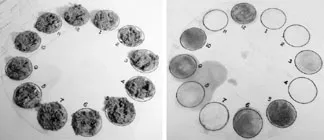
The goal is a mainsail that hoists easily and drops like a rock. A main that doesn’t strike when set loose can be a menace if the weather is pushing you or maneuvering room is limited.
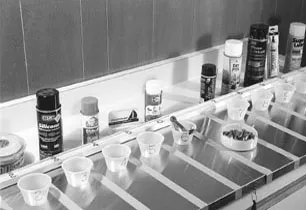
Most important is a good mast track, clean and smooth, with no resident spider webs or wasp cells. Silky spider cocoons cause great problems. They collect lubricant, dirt, and oxidized aluminum. Sailmakers hate such debris; they call it “mast mud.” It’s the black stuff you find on your mainsail’s luff.
If the track is external and metal, you will, of course, have used emery paper to round slightly and smooth the sharp edges. The inside corners are difficult, but worth doing; they are the most likely to cause jamming because they take more load than the outside corners. It’s hard work, but need only be done once, when the track is new, and touched up from season-to-season. It makes a world of difference.
If you have a mast groove and plastic slugs, a clean, smooth groove is even more important, because it’s tight, and a favorite haunt of the above-mentioned bugs. It’s also difficult to inspect. Running a sort of gun-cleaning swab up and down with a pendant on both ends is about the easiest way to clean it.
Look, too, for damaged plastic slugs that can hang up in the groove. Replace those that are nicked up or misshapen.
When it’s time to set sail, your best ally will be a good, long-lasting lubricant to minimize friction between the mast track and slides, which are subjected to a lot of twisting as the sail goes up or down.
The best lubricant would be one that need be applied but once a season. For a mast already stepped or in mid-season, the halyard, combined with a light downhaul and a swab of some kind, can be used.
Practical Sailor collected an even dozen lubricants—for an initial bench test. Eight are pressurized sprays, which are very handy to use. Two are wet gels. The other two are a car wax and candle wax.
Testing for a wear factor, simulating the repeated hoisting and lowering of a sail, could not be included in the test procedure. It would be very difficult to set up dozens of perfectly-matched situations, with actual masts or pieces of mast, along with various kinds of sail slides and slugs. Instead we made our own testing station.
The Test Procedure To test the slipperiness of the lubricants, a 36″ x 36″ sheet of virgin aluminum was cut in half to create a long clean surface. To maintain the aluminum’s shape, 90° bends were “braked” on the two long edges (see photo).
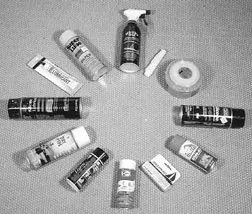
Twelve columns were laid out on the aluminum, which was carefully examined for any surface imperfections. Applying the lubricants to the “chutes” required meticulous masking to preclude adjacent contamination.
Half of the eight sprays dried quickly (within 30 minutes), which is desirable. The other four remained oily. The two gels remained wet after several hours of drying time.
The wet ones—two gels and four sprays—were given 24 hours to dry. None dried completely (which would be inconvenient in a real situation). Rather than give the wet ones more drying time, we gently wiped the chute surfaces clear of any oily residue.
In addition, the residue on some of the quick-drying sprays was wiped clean.
Because some of the chutes still seemed slightly oily, the entire assembly was then set aside for an entire weekend, in the hope that each chute would become as dry as it was ever doing to get.
Note: If one were working on a mast, any lubricants that require extended drying time and repeated wiping would be vexing.
After 2-1/2 days, the test resumed.
Common plastic dishes, chosen because they are most likely to be identical, were loaded with one-pound weights. A string from each dish was lead over the edge of the aluminum. Small weights were hooked on the ends of the string, increasing the load until the dish suddenly moved (like a team of huskies breaking loose a sled). Once the dish was in motion, it slid slowly but smoothly to the edge… and stopped, because the direction of the pull had changed.
By using combinations of weights down to 1/2 ounce, it was easy to grade the lubricants. The “first runs” proved very accurate. Subsequent runs, during which the bottoms of the dishes probably picked up lubricants, were invariably consistent and supportive of the first run data—which is displayed in the chart.
Because durability is a large factor, the test was repeated after extended exposure.
Initial Results In the first round of tests, the best lubricant required less than half the “pull weight” of the best. This suggests that the best was twice as slippery as the worst. The weights necessary for each lube are shown in the chart in the initial test column.

The top product was Team McLube Sailkote. Tied for second were the Superlube and CRC. Fourth was 3M. All those are sprays. The worst, working up from the bottom, were the S & Z gel, the Kel spray, and the Woody Wax pump spray.
Worth noting, because of their showing after exposure, is that the candle wax and car wax did not stand out. They posted middling rankings, with candle wax tied for fifth and the car wax tied for eighth.
Final Results After two months of exposure, the results changed dramatically, as might be expected. These results indicate which lubricant is still working well in comparison with the others.
The top lubricant was Elmer’s, which jumped from a tie for eighth place in the initial test to first, after exposure. Equally surprising was rather ordinary car wax, which moved from fifth initially to second place, and the candle wax, which vaulted from eighth to third.
As finally ranked, the best common products proved superior after exposure to the three “marine” lubes. Sailkote, which had a final rank of fourth, was the best “marine” product, and in fairness we should note that it’s a “performance” product, normally reapplied whenever things on racing boats start to slow down. Sea Spray tied for fifth (with 3M). Fastrac was ninth.
Price probably is not much of a factor in the selection of a sail track lubricant. But, for what it’s worth, Elmer’s (at 95¢ an ounce) emerged as the clear Best Buy.
All of this reinforces the opinion of many boat owners that things labeled for “marine” use too often carry inflated prices.
Fastrac, at $16 an ounce, must hold some kind of entrepreneurial record.
Of the three marine products, only the Mariner’s Choice Sea Spray, at 82¢ an ounce, carries a price to compete with Elmer’s.
All things considered, we can see no reason not to try candle wax, which works very well with external metal track, or, for a mast slot, a good non-abrasive car wax applied with a piece of rolled-up toweling with pull lines made of small stuff.
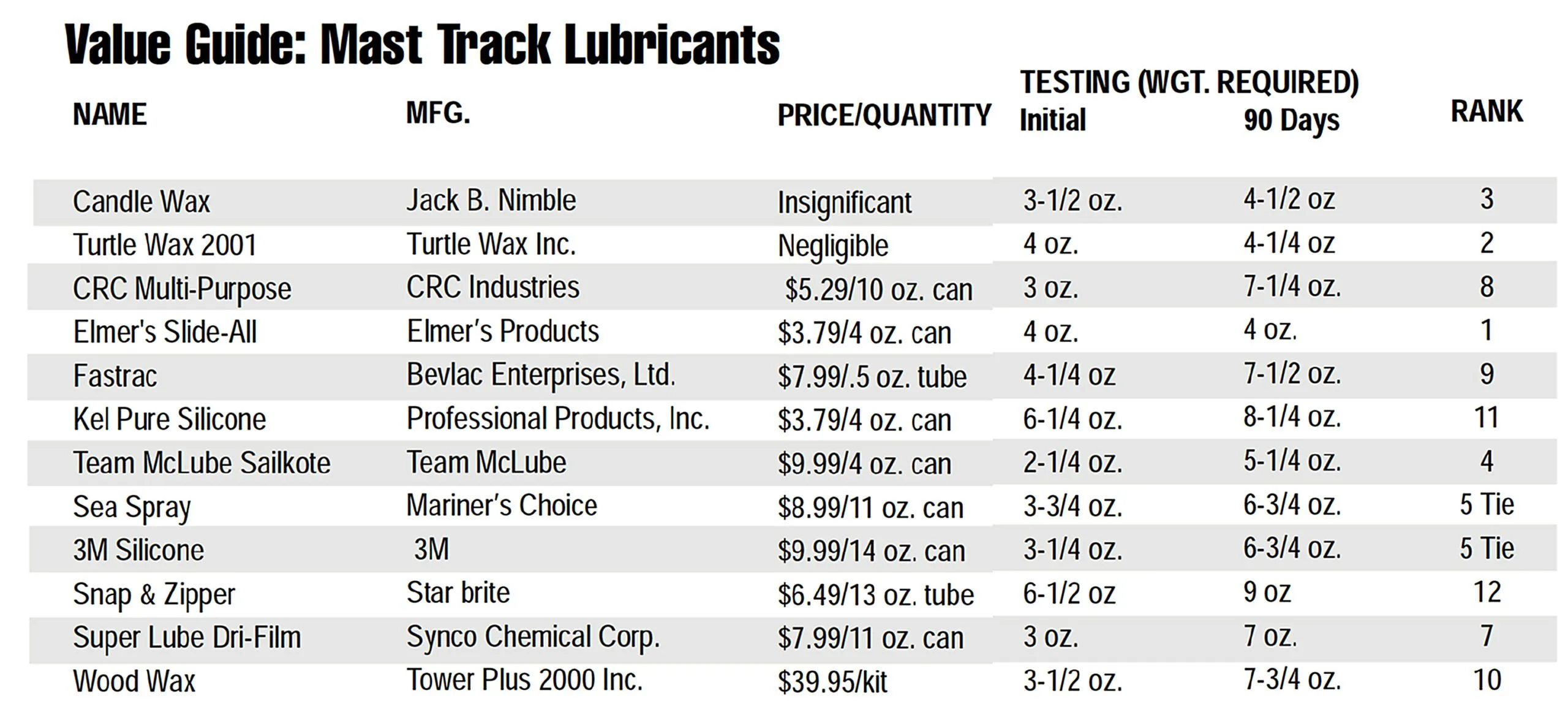
Contacts • CRC, 800/272-4620, www.crcindustries.com • Elmer’s, 800/848-9400, www.elmers.com • Fastrac, 905/763-8711, www.iaw.on.ca/~robemell/millen/fastrac/index.html • Kel, 800/334-2130 • Sailkote, 899/262-5823, www.mclube.com • Mariner’s Choice Sea Spray, 562/598-5861 • 3M, 800/364-3577, www.3M.com • S & Z, 800/327-8583, www.starbrite.com • Superlube, 800/253-5823, www.super-lube.com • Woody Wax, 800/619-4363, www.woody-wax.com
RELATED ARTICLES MORE FROM AUTHOR
Yet another article with a broken link to the guide, or no guide when there should be.
The title should read “Lubricants”, not “Lubrican’ts”!
Elmers is now 45.00 for a 4oz can!
That is because Elmer’s Slide-All is discontinued and any stock out there is old stock.
(Elmer’s parent company was broken up by a private equity firm, and many Borden Corporation products were killed off because of that)
Time for Practical Sailor to do another test with current products.
For example…. WD40 Brand now makes a PTFE Dry Film Lubricant.. Many others do too. Testing McLube’s other non marine specific dry film lubes would also be interesting, from a price comparison standpoint.
LEAVE A REPLY Cancel reply
Log in to leave a comment
Latest Videos
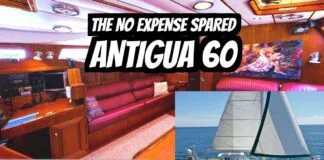
The No Expense Spared Antigua 60 Cruising Sailboat Soolaimon

How To Buy Sails – With Joe Cooper

Bavaria C42: What You Should Know | Boat Tour

Universal Diesel Engines – What You Should Know
- Privacy Policy
- Do Not Sell My Personal Information
- Online Account Activation
- Privacy Manager

SEA SPRAY CRUISES
St. lucia boat tours & shore excursions, welcome to sea spray cruises.
Unleash your wanderlust in St. Lucia with an array of exhilarating activities, brought to you by Sea Spray Cruises! Delight in a world of adventure as you pick your style – whether it’s a sea escapade or a thrilling combination of land and sea exploration to Waterfalls, Volcanos or Mud Baths. Our fleet of stable and spacious catamarans promises an unforgettable journey. Choose your dream adventure today and dive into the enchanting wonders of St. Lucia!
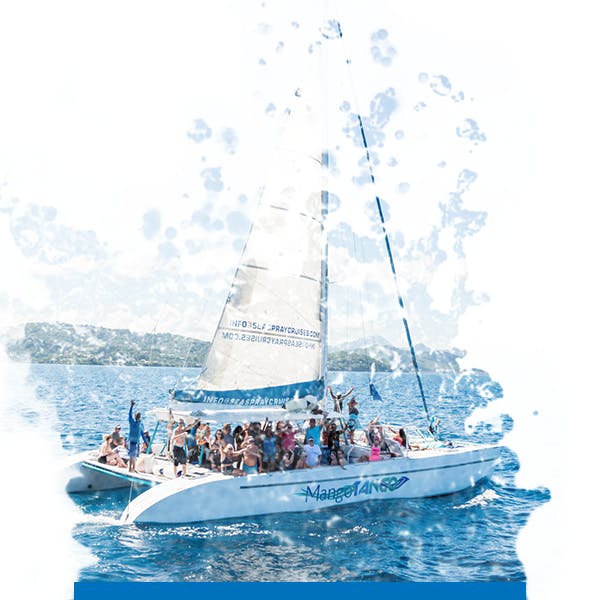
BY LAND & SEA
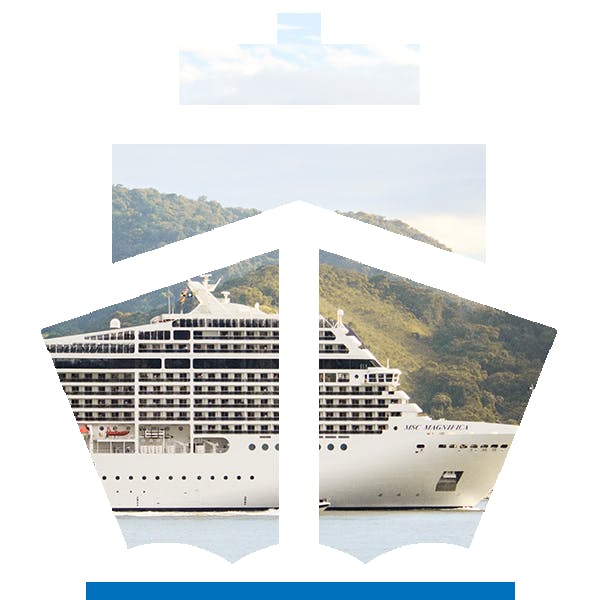
CRUISE SHIP EXCURSIONS
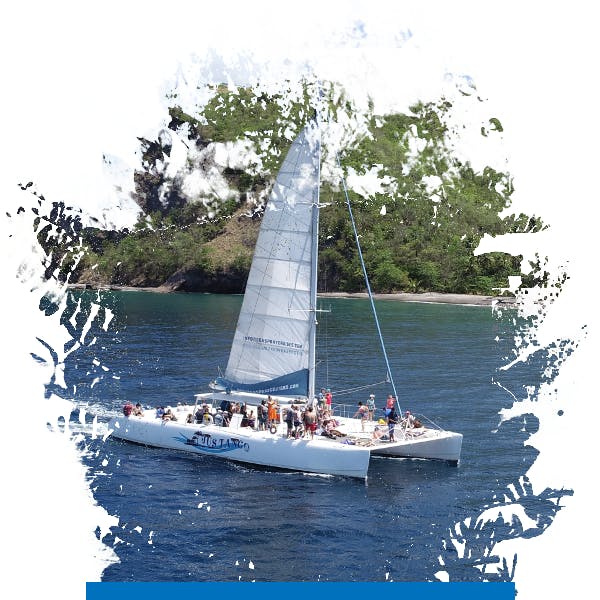
PRIVATE CHARTERS
- Most Popular
TOUT BAGAY SOUFRIERE CATAMARAN DAY TOUR
Sail the west coast, learn about the island, visit a volcano, cocoa farm, and more. Or, do optional activities like horseback riding.
- Clock 8:30 a.m.
OTHER AMAZING CRUISES & EXCURSIONS
- Clock 5:00 p.m.
- Hour Glass 2 hours
St. Lucia Sunset Cruise
Come seek the green flash on a St. Lucia sunset tour. You might find it in the eyes of that special someone or toward the horizon as the sun sets.
- Hour Glass 8.5 hours
Soufriere Sea-Fari for Cruise Ship Passengers
You become the driver and experience a thrilling ride on our island buggies SEA-FARI tour, driving along the coast to many area attractions like volcanoes, lookouts, and more.
Tout Bagay Soufriere Catamaran Day Tour
- Hour Glass 7 hours
St. Lucia Catamaran Day Tour to Soufriere for Cruise Ship Passengers
This cruise is a great way for cruise ship passengers to get the most of their short stay in St. Lucia. Waterfalls, volcanoes and mud baths included!
- Clock 2:00 p.m.
- Hour Glass 5 hours
Sip & Dip Sunset Piton Cruise
Board our catamaran for an exclusive Pitons sunset cruise! Sip delicious drinks, enjoy the sounds of local and international music and take in the views.
BY LAND AND BY SEA
Sea Spray Cruises is one of the leading providers of tours in St. Lucia, offering a wide selection of sailing excursions. Our fleet consists of three large catamarans and a number of smaller speedboats. Our tours in St. Lucia encompass everything that the island has to offer, from the majestic twin Pitons to the Sulphur Springs (the world’s only drive-in volcano), the stunning scenery of Marigot Bay to the enchanting Toraille waterfalls and botanical gardens, and the Morne Coubaril 18th-century cocoa plantation.
TOP-RATED ADVENTURES FOR OUR GUESTS
After much research of various excursions, my husband and I choose the Tout Bagay tour on Jus Tango Catamaran. We had so much fun that we decided to go on the tour for a second time and added the horseback-riding option. The crew was very knowledgeable, organized and entertaining.
A fabulous way to experience the sulphur springs, a waterfall, amazing fish and coral (snorkelling), a taste of Soufriere, the Morne Estate for a delicious lunch and close-up views of Marigot Bay. Add the horse riding option for otherwise inaccessible spots with amazing views from up high.
If You want island viewing from at cat at sea, this is trip for you! If want history of town near Pitons-and Cajun lunch , this trip is for you! If you want volcano experience & face painting with volcanic mud, this trip is for you !! If you to snorkel & booze cruise (rum punch + Piton beer), this trip is for you!!!
We went to St. Lucia on a cruise ship. This was not our first trip to the island but definitely the most enjoyable so far. We booked a land / sea tour to Soufriere. Our tour started in Castries and went along the west coast by bus to Soufriere. Stopping a couple of times along the way for pictures.
We booked a trip around the west coast of the island on one of the company’s catamarans. It was an amazing way to see the sights. The crew were incredibly attentive and really looked after the passengers. The tour included a visit to the sulphur springs, which were brilliant.
- Denarau Island
- Things to Do
- Restaurants
- Vacation Rentals
- Travel Stories
- Rental Cars
- Add a Place
- Travel Forum
- Travelers' Choice
- Help Center
The Seaspray Sailing Adventure - a... - South Sea Cruises
- South Pacific
- Fiji
- Viti Levu
- Denarau Island
- Denarau Island - Things to Do
- South Sea Cruises
The Seaspray Sailing Adventure - a great day out
An expensive day out but worth every cent! The experience starts with a 6.45am departure from your Coral Coast hotel for the lengthy journey to the marina at Denarau where after exchanging your tour vouchers for tickets you board the South Sea Cruises catamaran the Tiger IV for the journey to Mana Island. On the way the boat stops at other islands to pick up and set down passengers but this affords the opportunity to view at close hand the Mamanuca islands of South Sea Island, Bounty Island, Treasure Island and Beachcomber Island. At Mana Island you board a tender and are transferred to the Seaspray and the adventure begins. The navigation channel out of Mana Island is quite shallow and the engine has to be used but it is not long before the sails are hoisted and the free beer, soft drinks, coffee and snacks are flowing. The Seaspray is famous for its role in the 1965-67 Australian TV Series ‘The Adventures of the Seaspray’ and although there are probably just under 50 passengers on board, there was sufficient room to sit about, chat and enjoy the island scenery as you sailed by. We anchored off the deserted Modriki Island, which is famous for being the location of the Tom Hank’s film ‘Castaway’. Here you could borrow some snorkelling equipment or just dive in and swim to the island. For the weak or non swimmers there is a tender. The beach and water around the island were scenic and a quick stroll along the beach took you to ‘desperation point’. After about an hour / ninety minutes we returned to the Seaspray to enjoy a really good BBQ lunch that consisted of fish steaks, chicken kebab, tasty sausages, pasta, salad and bread. After lunch we sailed onto the island of Yanuya where we given an official kava greeting ceremony by the chief before looking around the island and buying some goodies at the local handicraft market. More sailing ensued before our return to Mana Island where we were dropped by tender to await our catamaran return journey. A late 8pm finish at the hotel but a great day out – remember your sun cream and note that you will get your feet wet when jumping from the tenders.

I was initially very wary of South sea island cruises after i had read some bad reviews on here but decided i would make up my own mind. We picked the all day Seaspray cruise, and were picked up from our motel in Nadi at 730 in the morning. They were very punctual and polite. When we got to Denaru Marina at about quarter to 9, we easily boarded and began our boat ride to the smaller islands before changing over to sea spray at Mana Island. My friend and i enjoyed the scenery and the freedom to move around, when we changed over at Mana Island it was gorgeous, pristine blue beautiful water (we had almost wished we had stayed here!), whereas south sea island was really small, bounty and treasure Island looked really nice! We boarded Seaspray, the crew were very friendly and entertaining, the food was pretty good we had a bbq lunch with sausages and salads etc, as well as cakes and free alcohol. We arrived at Modriki (which was the island castaway was shot) and snorkeled there for a while, and compared to other reviews i read that said the site was damaged, i thought the corals were beautiful and although the ones closer to shore were slightly damaged there was so many fish!). However when i was getting my fin on off the boat i dropped it, and one of the crew were kind enough to swim down the 15 m or so bottom just to retrieve it for me, which i was very thankful for! Yanuya was the second island which we went to, where we experienced the kava ceremony. Whist it seemed a bit put on for the tourists i enjoyed walking around the village and talking to some of the local kids. Some of the village was still being rebuilt due to recent storm damage, and It really made me appreciate living in Australia and how much we take so much for granted. The only negatives i would have would be that the trip to and from Mana Island to exchange onto the seaspray was a bit long, although i enjoyed seeing a vast variety of islands and just really really enjoyed being on a boat in Fiji! Besides this the crew were amazing, food was fairly good and the free alcohol made the whole trip enjoyable. I would recommend this to anyone who just wants to relax and explore some Fiji islands especially if you have little time like we did, and If i went back to Fiji again i would definitely do another one of their cruises.

Our group of 13 travelled inlate April 2010 with South Sea Cruises (fantastic ride and vibe), arrived at the island with the typical singing and friendly welcome from the employees. We were told that if there where any problems to contact our guide who then disapperared until the end of the day. Unexpectedly we had to place a significant deposit on our prepaid snorkelling hire, which we were left to ourselves to fit. We spent half an hour sorting out problem gear. A bit of help would be nice. The snorkelling off the beach was disappointing in terms of vibrant coral, it was mainly brown. Lots of fish, some large clams (cool) but not any bright colour. Not what the website suggests. The kids spent more time in the pool which was OK but nothing in comparison to resort pools on Denarau. Lunch was OK, basic buffet, sausages, rissoles, salad etc ... 6/10. Where it became annoying was when we went to use the catamarans and were told to pay $25 per hour. My reading of the website suggests its free, but they where not, and at one point they wanted to charge me again for a half hour I was owed. Basically, the answers to questions changed whenever you spoke to some one new behing the dive bar. By the end of the day I was glad to be off the island, and having been afterwards on South Seas Island can honestly tell people to go there, where day travellers are appreciated and welcomed, not made to feel as if they are an inconvenience. Castaway looks good but fails to deliver a warm Fijian day trip experience, To make my point, from the website: "Snorkel straight off the beach in the crystal clear waters and over vibrant coral reefs. Other non-motorised water sports activities include Kayaks, catamarans, windsurfers and spyboards." It would be nice to tell people they need to pay for these things.
We did the South Sea Island Combo cruise which was involved a ferry ride from Port Denarau to South Sea Island and then site seeing the other islands in the region. (Started at 9am finished by 3pm) South Sea Island is a beautiful island but is very small (3-4 min to walk around the entire island) &we were glad that we took the half day tour as it is very small. The submarine ride (included in tour) was good but very hot & noisy if you have kids on at the same time).The ferry ride that departed after the BBQ lunch (good quantity & fairly good quality) was great to sightsee the islands but would have been great to get off & see other islands rather than going past.

We did 2 tours with South Sea Cruises and we picked them because of their sister company in Airlie Beach, Queensland. I had a great experience with them and was confident to use them again in Fiji. We did 2 cruises with them - the Seaspray Day Sailing Adventure and the Twin Island Escapade. I found the prices very reasonable and there was plenty of food and drinks provided all day. Make sure you call the day before your cruise to confirm the time of pick up as this is important because there are several buses that pick up guests from the hotel and you don't want to get on the wrong one Even though they are all the same company, they go to different places. When you arrive at the Marina, you line up and the process is very quickly to exchange your vouchers for your cruise ticket and wrist band. The staff are very helpful and make sure you get to where you are going as quickly as you can so don't waste time and can experience everything. Seaspray Day Sailing - we caught the catamaran from the Marina to one island where we then boarded Seaspray. The staff on board both the catamaran and Seaspray where excellent. We went snorkeling and they provided the equipment but the only problem was that if you weren't quick enough, you would miss out on goggles and snorkels. They had plenty of fins. Apart from that the spot they take you to is magnificent, it is the same Island that is used in the movie Castaway Modriki. They can't dock the ship at this island so its anchored at sea and if you can and want to, you are able to swim back to the ship in time for lunch or you can wait for them to bring the zodiac out to pick you up. We swam back and were the firsts one back in time for lunch! You then are taken to a Fijian village near by and participate in a traditional kava ceremony. They nominate 2 people from the group to be the leaders from our group. My partner and one other guy were the leaders in this ceremony. We did try the kava and its an unusual taste and numbs the mouth but a minute or 2 later it goes away. The women on the island set up stalls when we arrive so that you can buy some souvenirs if you wanted, however they are island specific souvenirs they are pretty much the same thing you can get from Jacks. I would do this cruise again! Twin Island - this wasn't too bad but I wouldn't do it again, I would try the other cruises that the company has to offer. I just found that the time spent on the islands was too long because once you did everything you did it and there wasn't much else to do. South Sea Island doesn't have very good snorkeling if that is what you are after but Bounty Island is much better for this. LIke I said, once you have done everything there isn't much else to do. When we arrived at Bounty Island it was low tide so it was very very very hard to get out to snorkel because you wouldn't want to scrap you tummy along the coral as you went out. On both cruises we upgraded to the Captain's Lounge which was a very smart thing to do. When you upgrade you get free food and drinks, whereas if you don't upgrade they are optional and you can buy them from the bar onboard the ship. The Captain's Lounge is air-conditioned and cushion seats so after spending a full day in the sun you just want to come back to somewhere its cool and freshen up for the trip home. Overall we were happy with this cruise company and would not hesitate to use them again or recommend them to others to use.
I loved this trip! It has been one of the best days I have ever had!! Booked the Twin Island Escapade with SSC. Picked up by coach from the hotel right on time, really efficient check in and friendly staff. Brilliant catamarans to take you to the islands. Started at South sea island. Complimentary drinks and lovely BBQ lunch, really tasty. Had my own secluded sun lounger and beach umbrella. So tranquil. There was a trip out on a glass bottom boat to see the reef and fish which was included in the price. There was also a show during lunch. Straight after lunch we went to Bounty Island. Friendly welcome but this is more of a resort than a day trip island. As we arrived in the afternoon it was difficult to find a spot or lounger that wasn't already taken and the beach was pebbles so couldn't really lie out on it! Didn't have much time in the afternoon to explore Bounty. There didn't seem to be much happening and we got picked up ahead of our scheduled time. Altogether a great day and abolsutely amazing surroundings. Fijians are very friendly and welcoming and south sea cruises was an excellent day out, good value for money!

SeaSpray Yachts Charter Yachts At Largs & Oban Scotland

SeaSpray Scotland

SeaSpray Scotland
email us at: [email protected] mobile: 07939 517540 (+447939 517540), largs marina.
mob: 07939 517540
Welcome to SeaSpray. These are Our Yachts for You to Sail.
Click on the yacht for more information..

One of our Favourites !

The cosy saloon on Midnight Mirage

Kadore is the boat for you if you want to stay dry.

SeaSpray yacht Charters
Welcome to SeaSpray Yacht Charters
for fine sailing yachts, beautiful scenery, great Adventures, and Splendid Sailing in one of the best places to Sail in the world !
Sea Spray Charters

Sea Spray Charters feature a 65-foot Resmondo boat that has fished in the eastern and western Gulf of Mexico for more than 32 years, and is owned by Captain Bill Staff and his wife Tina. We specialize in tuna, snapper and amberjack fishing trips. And we offer one-day, two-day, three-day and even four-day trips. Call us today and book your next fishing adventure with us. You will leave Alabama Gulf Coast with a Great Fishing Experience!
- Bottom Fishing
- Deep Sea/off Shore
- Overnight fishing
- Subscribe to Enews
- Chat With Us

13893 Tuolumne Rd. Sonora, CA 95370
CALL US: (209) 536-9397

Seaspray Awning, Upholstery, Outdoor Furniture & Boat Covers
Seaspray Boat Covers has been providing individuals and businesses with high-quality awnings, upholstery, outdoor furniture & boat covers since 1977.
OR CALL US AT:

Welcome to Seaspray Boat Covers
Seaspray Boat Covers has established itself as a leader in the production of custom canvas coverings for residential and commercial clients. We offer a wide variety of products, including residential and commercial awnings, canopies, shade panels, sail shades, cabanas, retractable awnings, carport awnings, and much, much more.
When you partner with us, we leverage our experience and expertise to find a solution that best meets your space, budget, and needs.
Seaspray Commercial Awnings
Seaspray Boat Covers specializes in providing high-quality commercial awnings in Sonora, CA. Our custom-made awnings are designed to enhance the aesthetics and functionality of your commercial space. Whether you need shade for outdoor seating areas, protection for storefronts, or branding opportunities, we offer a wide range of durable and stylish awning options. Trust Seaspray for reliable, professional, and customized commercial awning solutions in Sonora, CA.
Seaspray Residential Awnings
Seaspray Awnings will custom design, fabricate and install new awnings. We recover stationary or retractable awnings for home or business. We also build custom tarps for trucks and outdoor equipment.
Residential Awnings
Retractable awnings, roller shades & drop shades, weather enclosures, shade curtains, suspension shades, sail shades, seaspray outdoor furniture.
Seaspray Boat Covers is your premier destination for outdoor furniture in Sonora, CA. We offer a vast selection of high-quality and stylish outdoor furniture that is perfect for transforming your outdoor living space. Whether you're looking for patio sets, lounge chairs, dining tables, umbrellas, or fire pits, we have a wide range of options to suit your style and preferences. Our furniture is crafted with durable materials to withstand the elements, ensuring long-lasting enjoyment. With Seaspray Boat Covers, you can create a comfortable and inviting outdoor oasis that is perfect for relaxing, entertaining, and enjoying the beautiful weather in Sonora, CA.
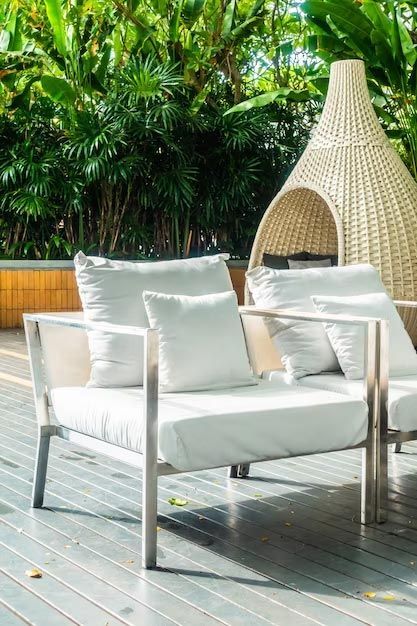
Seaspray Boat Covers
Seaspray Boat Covers is the leading provider of custom canvas boat covers, boat upholstery, RV upholstery and outdoor furniture cushions. For boats, we make custom canvas captain’s tops, bimini tops, cockpit covers, travel and mooring boat covers, and all-weather protective boat enclosures. We repair boat canvas and other canvas.
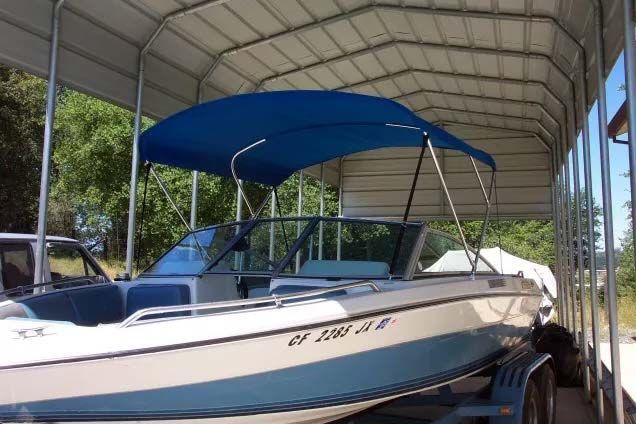
Bimini Tops
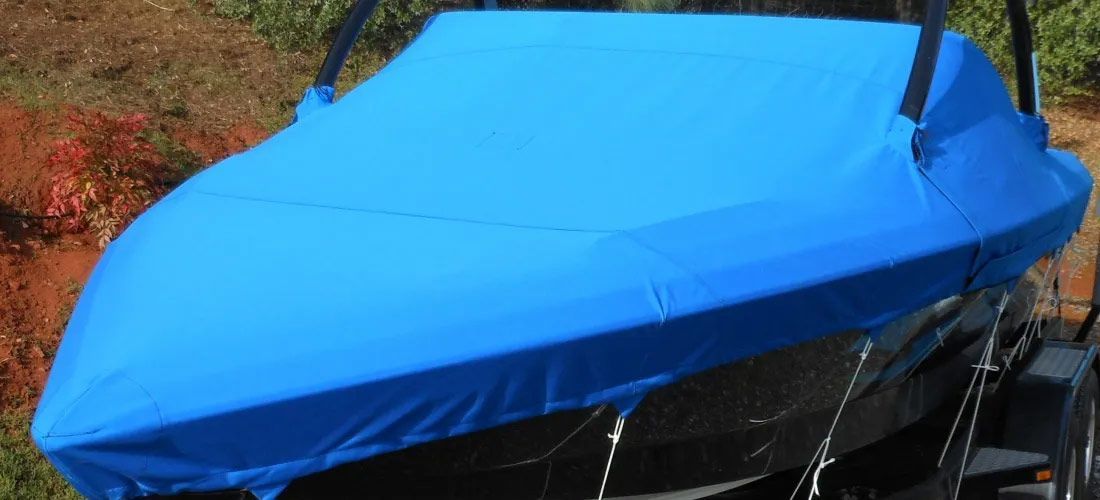
Boat Covers
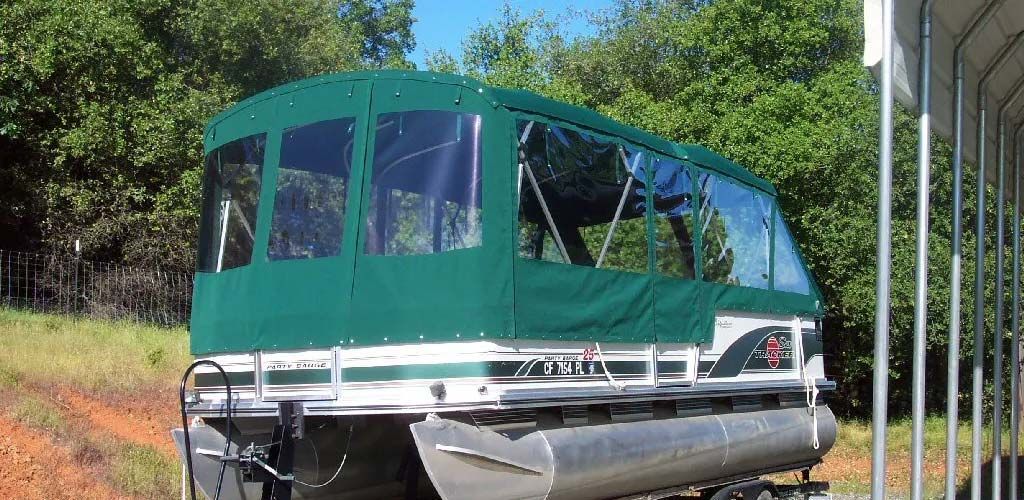
Boat Enclosures
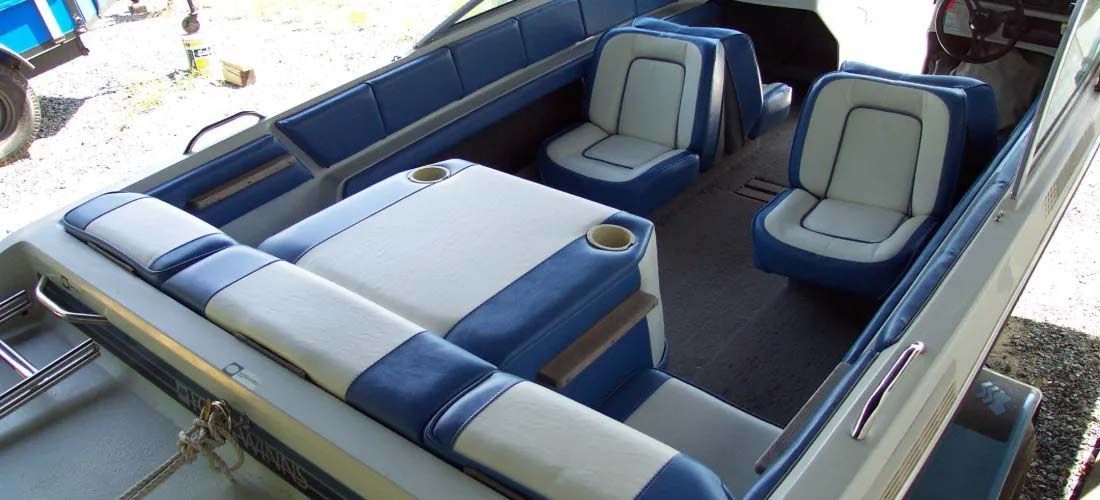
Custom Cushions
Seaspray upholstery.
Seaspray Boat Covers provides professional upholstery services in Sonora, CA. Our skilled craftsmen offer expert upholstery work for Boats, RV and Outdoor furniture. With attention to detail and high-quality materials, we revitalize and transform your upholstery to enhance its beauty and comfort. Trust Seaspray Boat Covers for exceptional upholstery services in Sonora, CA. Give us a call today .
Custom Car Upholstery
Rv upholstery, outdoor furniture cushions.
Completed Projects
Years of Experience
Client Satisfaction
Happy Clients
TESTIMONIALS
WHAT OUR CLIENTS SAY ABOUT US

Excellent quality and service. This is the 2nd time we have used them. They also did a tunau cover for our hot rod. They originally came out on 4/15 to give estimate and for us to pick out color and said they would be out within 30 days. It was less than that. Won't use anyone else.
Antioch, CA
They Came Highly Recommended By Many Of Our Neighbors. All They Said Was True! Very Customer Focused. Delivered When They Said They Would And For The Amount Quoted. Excellent Work. Exceeded Expectations.
Brentwood, CA
They did a great Job !!!!
Scarlett F.
San Jose, CA
SERVICE AREAS
We Offer Services In The Following Areas
CALAVERAS COUNTY, CA
Alameda, Albany, Berkeley, Castro Valley, Dublin, Emeryville, Fremont, Hayward, Livermore, Newark, Oakland, Piedmont, Pleasanton, San Leandro & Union City
CONTRA COSTA COUNTY, CA
Alamo, Antioch, Brentwood, Clayton, Concord, Danville, El Cerrito, Hercules, Lafayette, Blackhawk, Martinez, Moraga, Oakley, Orinda, Pinole, Pittsburg, Richmond, San Pablo, Pleasant Hill, San Ramon & Walnut Creek
SANTA CLARA COUNTY, CA
Campbell, Cupertino, Gilroy, Los Altos, Los Altos Hills, Los Gatos, Milpitas, Monte Sereno, Morgan Hill, Mountain View, Palo Alto, Santa Clara, Saratoga & Sunnyvale
SAN MATEO COUNTY, CA
Atherton, Belmont, Brisbane, Burlingame, Colma, Daly City, East Palo Alto, Foster City, Half Moon Bay, Hillsborough, Menlo Park, Millbrae, Pacifica, Portola Valley, Redwood City, San Bruno, San Carlos, San Mateo, South San Francisco & Woodside
SAN JOAQUIN COUNTY, CA
Stockton, Tracy, Lodi, Manteca, Lathrop, French Camp, Ripon, Escalon, Acampo, Lockeford, Linden, Woodbridge, Thornton, Farmington, Morada & Victor
STANISLAUS COUNTY, CA
Modesto, Turlock, Oakdale, Ceres, Patterson, Riverbank, Newman, Hughson, Salida, Waterford, Denair, Keyes, Empire, Westley & Hickman
GET IN TOUCH
We’d love to hear from you. Choose the most convenient method and we’ll get back to you as soon as we can.
PHONE NUMBER:
(209) 536-9397
EMAIL ADDRESS:
OUR LOCATION:
WORKING HOURS:
M-F 8am-5pm, Sat 8am-1pm, Sun Closed
For more information or to schedule a service, call us at (209) 536-9397 or fill out the form below:
Home (Contact Form)
QUICK LINKS
PAYMENT OPTIONS

Location: 13893 Tuolumne Rd. Sonora, CA 95370
© 2023 Content, including images, displayed on this website is protected by copyright laws. Downloading, republication, retransmission or reproduction of content on this website is strictly prohibited.
TERMS OF USE | PRIVACY POLICY | ACCESSIBILITY Website Built By BROADPROXIMITY
A U.S. Gunship Sank a Fishing Vessel in the Pacific. The Target Was No Ordinary Boat.
The destruction reflects a stand against coercive tactics.

- A U.S. Air Force gunship sank a simulated fishing boat during Exercise Balikatan 2024.
- The exercise took place in the Philippines, where China is using paramilitary fishing boats to force its territorial claims.
- The destruction was part of a SINKEX that saw the AC-130 train its guns on the target ship.
A U.S. Air Force gunship shredded a fishing boat as part of joint exercises between the United States and the Philippines. While sinking a simulated civilian vessel seems in poor taste, China is using ships just like it—which have been known to carry weapons—to bully other countries. The exercise was a clear sign to the Chinese government that aggression, even by innocent-looking fishing boats, would be repelled in all forms.
“Shoulder to Shoulder”

The exercises, known as Balikatan (“Shoulder to Shoulder” in the Filipino national language, Tagalog) have run from April 22 until today, May 8, and take place in the Philippines. The exercise, known as Balikatan 2024, is meant to reinforce defense cooperation between the two countries, but also includes participating contingents from the Australian Defence Forces and the French Navy.
Ghostrider SINKEX
Among the many events in the annual exercise was the participation of an AC-130J Ghostrider gunship from the 27th Special Operations Wing, based at Hurlburt Field, Florida. The AC-130J, based on the C-130J Super Hercules, is the latest in a long line of transport aircraft converted into gunships that goes as far back as the Vietnam War.
The Air Force operates 37 of them at this time, each armed with a 30-milimeter side-firing chain gun and a direct-fire, 105mm howitzer. The gunship can also attack enemy forces with the Griffin air-to-ground missile, launched from tubes in the side of the aircraft.
The result is a versatile platform that can attack targets in direct-fire mode, loitering over the battlefield and raining shells down on enemy positions, typically in support of conventional or special operations forces. The platform’s vulnerability to guns and missiles, however, restricts it to operating in “permissive” airspace, or airspace without advanced enemy air defenses. Even against lightly armed adversaries, it typically operates at 10,000 feet or higher, staying out of range of short-range, shoulder-fired, surface-to-air missiles.

Unlike previous generations of gunships, the Ghostriders can still engage enemy forces from a distance. New to the Air Force’s gunships are wing-mounted pylons capable of carrying air-to-ground munitions, including Hellfire missiles and GBU-39 Small Diameter Bombs (SDBs). SDBs, launched from high altitude and then gliding toward their target with the help of GPS and small, pop-out wings, can strike targets up to 40 miles away.
Maritime Militia

In this month’s exercise, an unused fishing boat was procured by the Armed Forces of the Philippines and parked off the coast of Lubang Island, on the western edge of the Philippine archipelago. In what is called a SINKEX, or “Sinking Exercise,” an AC-130J circled above it, firing down into the ship and quickly sinking it.
Most of the hits appeared to come from the gunship’s GAU-23/A 30mm chain gun, although one towering explosion and shower of water, at the 10-second mark, appeared to come from a 105mm howitzer. The hull of the ship quickly disappears beneath the waves, leaving only the twin masts above the surface.
The destruction of a fishing boat, ostensibly a strictly civilian vessel, was not an exercise in bad judgment, but a pointed demonstration to the Chinese government.

In the 2010s, China began asserting its claim to the so-called “Nine Dash Line,” a line consisting of nine dashes that demarcated its territorial claims in the South China Sea. That wasn’t all that unusual, but the scope of the claims, including virtually 90 percent of the sea, was more atypical. The territorial claim also ignored competing claims from China’s neighbors, including Indonesia, Malaysia, Taiwan, the Philippines, Vietnam, and Brunei.
China’s claim in the South China Sea is so expansive it reaches more than 500 miles from the Chinese mainland to within 50 miles of the Philippines. The Philippines disputes this, and ships of the two countries have repeatedly faced off in the sea. Chinese Coast Guard ships have aggressively used water cannons and ramming tactics against otherwise peaceful Filipino ships, breaking windows and injuring crew members .

One tool used by China in the disputes is the so-called “maritime militia,” or China’s extremely large commercial fishing fleet. Under China’s militia system, fishing boats in private hands can be called upon to undertake paramilitary missions, including surveillance and intelligence gathering missions. They are also used to outnumber and intimidate ships from opposing countries, and have been used against ships of the Philippines.
According to the Center for Naval Analyses , the ships also receive training in direct action missions, including “anti-air missile defense, light weapons use, and sabotage operations.” All of this makes them a deniable asset for the Chinese government, one that can carry out violence, intimidation, and other unneighborly acts at sea without being an official part of government.
The use of a fishing boat as a target was not ill-conceived, or the result of getting the cheapest floating piece of scrap possible to act as a target. It was deliberate, and sends a message to China that the fishing boats of the Maritime Militia won’t be spared if they are used for violent action simply because they’re civilian hulls. If they carry weapons into combat and act as naval auxiliaries, they’re fair game.
As a large, slow-moving, converted transport aircraft, the AC-130J’s usefulness in a major conflict has been called into question. The gunship may not have a chance against a Chinese carrier battle group, or an island-based, surface-to-air missile system. But if any aircraft has the patience to loiter for hours over a fleet of fishing boats, and then pick the armed ships and engage them with precision fire, it’s the Ghostrider.
The Maritime Militia may have met its match.

Kyle Mizokami is a writer on defense and security issues and has been at Popular Mechanics since 2015. If it involves explosions or projectiles, he's generally in favor of it. Kyle’s articles have appeared at The Daily Beast, U.S. Naval Institute News, The Diplomat, Foreign Policy, Combat Aircraft Monthly, VICE News , and others. He lives in San Francisco.

.css-cuqpxl:before{padding-right:0.3125rem;content:'//';display:inline;} Pop Mech Pro .css-xtujxj:before{padding-left:0.3125rem;content:'//';display:inline;}

Skunk Works Unveils Stealthy Tanker Design

Rebuilding the Maze

A Groundbreaking Discovery For Light-Speed Travel

Russia Is Now Using Golf Carts in Combat

The Bradley Gets a New Iron Fist

South Africa Wins Fight for 'Indian Titanic' Loot

Can the Army’s New Rifle Take on Russian Armor?

Overhaul Your Shop

The Source of All Consciousness May Be Black Holes

F-22s are Flocking to This Island in the Pacific

Russia's Unprecedented Nuclear Drills

IMAGES
VIDEO
COMMENTS
The SeaSpray is one of the earliest production catamarans built in the US. (Preceeding the Hobie Cats by several years.) The designer, Allan J. Arnold, a west coast aerospace engineer, with some friends, also built the first 100 boats. It received considerable attention after winning it's class at Yachting Magazines 'One of a Kind' regatta of 1967.
Spray. (sailing vessel) Lost at sea sometime on or after November 14, 1909; cause unknown. Spray was the sailboat used by 19th-century Canadian-American seaman and author Joshua Slocum during the first solo circumnavigation of the Earth. Slocum departed Boston Harbor in the 36-foot-9-inch (11.20 m) vessel on April 24, 1895 and returned to ...
Sea Spray 15 is a 14′ 11″ / 4.6 m catamaran sailboat designed by Allan J. Arnold and built by various starting in 1966. ... Sail area in square feet, derived by adding the mainsail area to 100% of the foretriangle area (the lateral area above the deck between the mast and the forestay). D: ...
The sail area to wetted surface ratio of 2.5 is quite good in the original Spray, indicating good light weather performance, however the SA to Displacement ratio of 16.6 is less than optimum. Sail area could therefore be increased, especially so given the enormous initial stability (stiffness) under sail, aiming closer to a ratio between 18 and 20.
Sea spray generated by breaking surface waves. Sea spray are aerosol particles formed from the ocean, mostly by ejection into Earth's atmosphere by bursting bubbles at the air-sea interface. Sea spray contains both organic matter and inorganic salts that form sea salt aerosol (SSA). SSA has the ability to form cloud condensation nuclei (CCN) and remove anthropogenic aerosol pollutants from the ...
2024 REGATTAS - MAKE PLANS TO ATTEND. Upcoming Events 2024. Provincial Sailing Association Series Regattas. Newell Sailing Club - Open Catamaran Team Sailing Clinic — July 5-7. Newell Sailing Club Prairie Wind Regatta — July 13-14. Alberta Heritage Classic — July 19-21 at Calgary Yacht Club SeaSprays invited. Lake Osoyoos Sailing Club ...
5238 posts · Joined 2008. #3 · Apr 5, 2009. While I am not personally familiar with these boats it looks like a fun but wet ride. There is one listed on the web for $900 here: Sea Spray 15 catamaran sailboat for sale. The good news is that it has a jib which should make it easier to come about although you will find that jibing is the faster ...
Sea Spray 18 is a 18′ 0″ / 5.5 m catamaran sailboat designed by Kirke Leonard starting in 1971.
GLENMORE SAILBOATS LTD. (403) 266-3055 . THE CATAMARAN PEOPLE since 1964 . Enquire about our other fine sailboats . Commodore * Enterprise * Kolibiri * DS 16 Overnighter . ASSEMBLY INSTRUCTIONS. All the parts necessary to assemble your SEA SPRAY are contained in the packing carton or crate. Assembly should be done in sequence and prior thereto we suggest you lay out the parts and familiarize
An energized air-sea interface facilitates exchange between the atmosphere and the ocean. A new study looks at the formation of sea spray, an important component of this exchange.
How much does a boat from Seaspray cost? Used boats from Seaspray on TheYachtMarket.com range in price from £9,000 GBP to £29,100 GBP with an average price of £16,200 GBP. A wide range of factors can affect the price of used boats from Seaspray, for example the model, age and condition. Used Seaspray for sale from around the world.
The Sea Sprite 23 is a trim but rugged daysailer-overnighter from naval architect Carl A. Alberg that enjoyed a 25-year production run under several different Rhode Island builders, most notably Clarke Ryder. It's a typical Alberg design—narrow beam, full keel and conservative ballast-to-displacement ratio and graceful lines.
Sea Spray tied for fifth (with 3M). Fastrac was ninth. Price probably is not much of a factor in the selection of a sail track lubricant. But, for what it's worth, Elmer's (at 95¢ an ounce) emerged as the clear Best Buy. All of this reinforces the opinion of many boat owners that things labeled for "marine" use too often carry inflated ...
Sea Spray 15, pre 1973, Corliss, West Virginia. 1/11/09, Sea Spray 15, pre 1973, Corliss, West Virginia, $900, price reduced 4/14/09 to $855, sold 7/6/09 ... Contact: Free Sailboat Ad: Go to Sailing Texas classifieds for current sailboats for sale . Sea Spray 15 catamaran LOA 15' Width 66" Mast height 20' 2" completely re-built standard halyard ...
Sea Spray Cruises is one of the leading providers of tours in St. Lucia, offering a wide selection of sailing excursions. Our fleet consists of three large catamarans and a number of smaller speedboats. Our tours in St. Lucia encompass everything that the island has to offer, from the majestic twin Pitons to the Sulphur Springs (the world's ...
South Sea Cruises: The Seaspray Sailing Adventure - a great day out - See 1,935 traveler reviews, 1,121 candid photos, and great deals for Denarau Island, Fiji, at Tripadvisor. ... we easily boarded and began our boat ride to the smaller islands before changing over to sea spray at Mana Island. My friend and i enjoyed the scenery and the ...
WD-40 has been around since the 1950s, when it was created for corrosion prevention in the aerospace industry. The WD stands for water displacement, and the 40 refers to how many attempts it took to get the formula right. WD-40's chemical formulation and low viscosity make it ideal for removing moisture and protecting surfaces.
Kadore is the boat for you if you want to stay dry. Midnight Mirage Moody 376. One of our Favourites ! 1/12. SeaSpray yacht Charters. Welcome to SeaSpray Yacht Charters. ... Sea Spray Yacht Charters Ltd Largs Yacht Haven Registered in Scotland Company No. SC495376 ...
Email. [email protected]. Sea Spray Charters feature a 65-foot Resmondo boat that has fished in the eastern and western Gulf of Mexico for more than 32 years, and is owned by Captain Bill Staff and his wife Tina. We specialize in tuna, snapper and amberjack fishing trips. And we offer one-day, two-day, three-day and even four-day trips.
960 W. Levoy Drive, Suite 100 Taylorsville, UT 84123 1-800-869-1686 001-801-571-0071 (Outside the U.S.A)
The Sea Spray is owned by Captain Bill Staff and his wife Tina. Bill, a boat captain of 35 years, has been sailing the Sea Spray for more than 29 years. We offer One-Day, Two-Day, Three-Day and even Four-Day trips as well as Tournament trips. The Sea Spray is a proud vessel with a knowledgeable and courteous crew.
Contact Us. For more information or to schedule a service, call us at (209) 536-9397 or fill out the form below: Seaspray in Sonora specializes in custom boat canvas, boat covers, bimini tops, boat upholstery, classic car upholstery, outdoor cushions and awning re-covers.
The U.S. Air Force's AC-130J Ghostrider took a stand against maritime aggression by sinking a fishing boat in the Philippines during Exercise Balikatan 2024. ... 2024 in the South China Sea. The ...